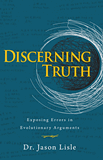
The Hardy-Weinberg Equilibrium Model: Evidence for Evolution?
Abstract
Public schools, colleges, and universities today teach the Hardy-Weinberg Principle in biological science courses, and many of them do so inaccurately. The inaccuracy of these teachings are simply due to either a misunderstanding of the application of the Hardy-Weinberg Principle and equation, or it may be due to a deliberate misinterpretation of its uses to further support and promote a “macroevolutionary” philosophy. We will discuss how instructors are using the Hardy-Weinberg Principle as evidence for molecules-to-man Darwinian evolution, why this method of application is incorrect, and what the Hardy-Weinberg Principle can be used for. We will also answer the fundamental question: does the Hardy-Weinberg Principle itself require any rejection of biblical foundations?
Introduction
The Hardy-Weinberg equation itself is quite simple, and can provide a rough representation of the gene frequency in a population over time. The Hardy-Weinberg Principle (and equation), discovered by Godfrey H. Hardy, a British mathematician, and Wilhelm Weinberg, a German physician, is used to find the proportion of the variety of genotypes in a random-mating population, in terms of gene frequency. The Hardy-Weinberg Principle is based upon a mathematical calculation, known as the Hardy-Weinberg equation. It consists of the variables p and q, which represent the dominant and recessive allele frequency in a population over time. For example, if in a given situation we have a population of fruit flies, we simply need to count or use fairly accurate estimations of the number of fruit flies in the population. After calculating the genotypic frequency, we must insert the frequency in the correct place in the equation. By using simple algebra, we can chart the mathematical trends of a population’s allele frequency over time, which is very useful in understanding many genetic, biological, and ecological principles. Therefore, if we know the number of individuals in any given population, we can utilize the Hardy-Weinberg equation to calculate the allele frequency. Since we are working with a reasonably small time frame, we can also observe the population and perform comparative studies. Both the principle and the formula itself are used in a wide variety of topics pertaining to population genetics. However, scientists and professors alike have loaded too much weight on the Hardy-Weinberg Principle, using the equation as “proof” of billions of years of molecules-to-man evolution.
The Terminology
Evolution, in population genetics, only has the capacity to refer to small changes in the DNA of a population as the individuals reproduce over time.
It is vital to understand what definition of evolution the Hardy-Weinberg equation has the capacity to demonstrate. In population genetics, we are simply referring to the type of evolution that leads to changes in allele frequency in any given population over time. In other words, this process can be identified as genetic variation in a population over time by way of natural selection, mutations, and other genetic and environmental pressures. This change is observable, but it has genetic and environmental limits.
When one hears the word evolution, it is only natural to associate the term with Darwinian evolution, and more specifically upwards-onwards evolution, which is supposedly the process that caused an ancestral ape-like creature to slowly over millions of years evolve into Homo sapiens—the modern human. At least, it is not the definition one should be using. Evolution, in population genetics, only has the capacity to refer to small changes in the DNA of a population as the individuals reproduce over time. We see these variations in our own families, from grandparents to grandchildren. We always expect some variation in the features of the offspring, but we never expect new features to even begin to arise. This is the definition of evolution I will be referring to if not otherwise specified. The delineation of definitions will be explained further below.
The Logic
The largest problem when using the Hardy-Weinberg Principle as evidence for “evolution” in population genetics is in the delivery. This in particular is where you see instructors committing the fallacy of equivocation on the word evolution. Class lectures and slideshow presentations containing the phrase “Evidence for Evolution” with creative illustrations of microbes-to-mammal evolution are presented in public schools, colleges, and universities—yet often, on the very next slide the instructor reviews population genetics and the Hardy-Weinberg Principle. Within a matter of one slide, the definition of evolution was switched from molecules-to-man evolution to evolution according to population genetics—or in other words, huge increases in genetic information equated with the shifting of already-present genetic information, respectively. Some instructors may define the appropriate and relevant meaning of evolution as the “change in allele frequency in a population over time,” but rarely will you hear them differentiate between molecules-to-man evolution and evolution in terms of allele frequency in population genetics. Intentional or not, this allows any evidence for “evolution” (change in allele frequency over time) to also hold as evidence for “macroevolution” (molecule-to-man evolution.) Logically then, the Hardy-Weinberg Principle cannot demonstrate or facilitate in supporting molecules-to-man evolution without equivocation.
The Science
Necessary Conditions for Hardy-Weinberg Equilibrium
- Mutation is not occurring.
- Natural selection is not occurring.
- The population is infinitely large.
- All members of the population breed.
- All mating is totally random.
- Everyone produces the same number of offspring.
- There is no migration in or out of the population.
The Equation
p2 + 2pq + q2 = 1 and p +q =1
Where:
p = frequency of the dominant allele in the population
q = frequency of the recessive allele in the population
p2 = percentage of homozygous dominant individuals
q2 = percentage of homozygous recessive individuals
2pq = percentage of heterozygous individuals
Many teachers and professors today are using the Hardy-Weinberg Principle as “proof” for large-scale uphill changes in genetic information and diversity. The only “evolution” the equation can support is really not evolution in the way that it is typically understood at all, as no new genetic information of the type necessary for molecules-to-man evolution is being added into the gene pool of a given population. Rather, the only conclusion we can induce from the Hardy-Weinberg Principle is the inevitability of the seven conditions not being met (equilibrium not occurring), and the inevitability of minor variations in allele frequency over time. Of course, both Christian and secular scientists agree upon this. This only provides us with observable evidence for genetic variation, such as what we see within a biblical “kind,” usually described as a taxonomic family.1
So why the mix up with the terminology? Well, it all comes down to one fundamental belief: evolutionists do not hold the position that there are different types or magnitudes of evolution. Rather, they hold the position that there are different definitions of evolution based on the field of science one studies and the scale of time being assessed. The term evolution can be easily conformed into any topic of discussion if it is referred to as a broader term—especially “change over time”. Who would deny that any species does not change over time? Surely no one would. However, just because we can see the dog family change over hundreds, or even thousands of years does not give any indication that they will change into a completely different “kind” or taxonomic “family.” A dog can only genetically and structurally become so small or large, and it cannot gain new genetic information that allows it to evolve new features altogether. The DNA of an organism can only give variety to the phenotypic characters of the organism.
The Education
One example, found in a Hardy-Weinberg simulation lab manual for high school and college institutions, stresses the importance of teaching the historical significance of the influential minds of evolutionary philosophy. “Prior to this activity it is important to discuss with the students the contributions of pioneers of evolutionary thought (e.g. Aristotle, Lyell, Malthus, Lamarck, Wallace and Darwin, or others you may choose).”2 It is extremely common for Darwinian evolutionary ideas to be included in lectures, class discussions, and labs supposedly based upon genetic variation within distinct kinds (parallel to the biblical created kind) or even the Hardy-Weinberg Principle.
I recall being taught that new information was indeed being added into the population's gene pool—by a certain type of gene flow known as immigration. Immigration is the entering of individuals into a population. However, this is not the “new information” that is required to catalyze the evolution of, for example, reptilian scales into bird feathers, as these two features are genetically and structurally different. The impossibility of a Hardy-Weinberg population, also known as Hardy-Weinberg Equilibrium, does not prove or provide any evidence for large-scale, onwards-upwards evolution, as there is still no known process by which new genetic information is added to the genome that would in turn cause the organism to evolve new features altogether.
Conclusion
The Word of God provides the only explanation that can account for the diversity and complexity of life, as we understand that in fact there is variety within a biblical “kind” (Genesis 1 and Genesis 6) of creature, but never a change from one “kind” of creature to another. The closest scientific term that equates to the biblical “kind” is usually the “family,” in the study of taxonomy. The concept of the biblical kind does not in any way contradict the Hardy-Weinberg Principle when applied correctly.
If anything, the Hardy-Weinberg Principle is a demonstration of how God implemented and limited genetic variability into all of his creations. It also demonstrates the effect and inevitability of natural selection, deleterious mutations, predation, and competition rooted from the fall of man and the repercussions of the original sin. In fact, population genetics is a clear demonstration of the undeniable fact that at best, a population can only maintain the biblical kind’s genetic information, and at worst, the population loses some genetic information. This is the opposite of upwards-onwards evolution. Therefore, the Hardy-Weinberg Principle itself is not contradictory to the Bible when applied correctly.
Footnotes
- See “Bara-What?” and “Determining the Ark Kinds”
- Larry A. Welch, “A Model of Microevolution in Action,” The American Biology Teacher 55, No. 6 (1993): 362.
Recommended Resources

Answers in Genesis is an apologetics ministry, dedicated to helping Christians defend their faith and proclaim the good news of Jesus Christ.
- Customer Service 800.778.3390
- Available Monday–Friday | 9 AM–5 PM ET
- © 2025 Answers in Genesis


